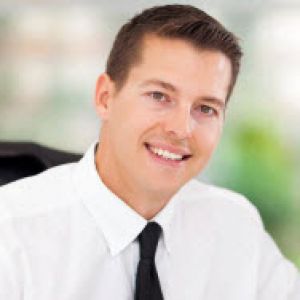Alternative medicine. What is it?
Posted by William Harris on September 28th, 2017
Phytotherapy appeared in the era of the formation of ancient civilizations and entered the practice of all peoples. Equally ancient are methods based on diets and abstinence from food, nutrition of plant food, ingestion of sorbents, treatment of "similar like", etc. Another group of methods of treatment originated in the East and from there spread to the Old World and America - it is acupuncture, healers and chiropractic, various types of massage. Some methods do not have clear origins, since they have been included as separate elements of treatment in various medical schools. Hypnotherapy and psychotherapy go back to the practice of shamans, manual therapy, osteopathy follows the experience of the first bone carps. Treatment through immersion in art was calming and gave patients a hope for recovery for many centuries. As a result, accumulated experience of healing, differing geographically and historically, but is the result of a collective human mind. The experience was summarized in treatises that moved around the world and found their translators and readers thousands of kilometers away. Sometimes this way took centuries. Elements of eastern medicine, which has an age of more than 4 millennia, appeared in Europe only in recent centuries. Thus, several successive and parallel processes proceeded at once - the formation of medical directions, their localization in a primordial form, mutual enrichment, and, finally, the birth of modern scientific medicine.
Phytotherapy never went out of the arsenal of medicinal remedies of doctors, average medical workers and the patients themselves. Despite the fact that most doctors consider this section as the competence of only specialists with higher education, life goes on as usual and our compatriots willingly use to treat herbs, relying on knowledge obtained from herbalists, or on the advice of relatives and friends.
Homeopathy has passed the thorny path of becoming in our country. In the late 80-ies, homeopathic specialists united around various associations. These doctors have their own contingent of patients, which gradually increases. Great hopes in the development of the method can be placed on the commonwealth of homeopathists and molecular biologists. Their joint work allows us to discover the mechanisms of therapeutic action of traditional homeopathic remedies and offer new approaches to therapy with small doses of drugs.
The first group of funds includes traditional or traditional methods: acupuncture (including Su-Dzhok), ayurveda, traditional Chinese medicine (TCM), Mazdana, homeopathy, anthroposophic medicine, traditional medicine, naturopathic medicine. This group includes various traditional healing systems: domestic, Chinese, Tibetan, Vedic, etc.
Classical acupuncture - the impact on human organs and systems with the help of special needles through acupuncture points. Conventionally, various ways of affecting acupuncture points can be referred to here: micro-therapy with surface acupuncture, thermopuncture, cryoreflexotherapy, hirudoreflexotherapy, vacuum reflexotherapy, ultrasonic reflexotherapy, pharmacopuncture, bioenergopuncture, application reflexotherapy and combined methods.
Naturopathy is a practice based on a scientific medical understanding of human anatomy, physiology and pathogenesis. However, naturopathy uses for treatment "natural" or close to "natural" means: therapeutic nutrition, homeopathy, treatment with herbs and other natural substances, manipulation on bones and joints, natural delivery, hypnotherapy.
The second group consists of bioelectromagnetic methods. This group includes rather heterogeneous approaches. These are various methods of influencing acupuncture points (electropuncture reflexotherapy, electromicrophoresis, aeroionopuncture, etc.), bioenergetics, bioresonance therapy, percutaneous electroneurostimulation, exposure to information-active drugs ("charged" water, etc.), treatment with generators of special physical fields (torsion, microlepton), non-contact field exposure to metals, minerals, and plants.
The third group consists of diets, food supplements, phytotherapy and healthy lifestyle methods. This includes a variety of diets, methods of starvation and detoxification, vegetarianism, herbal medicine, macrobiotics, the use of dietary supplements, methods of rational nutrition (the Shelton system, Bragg, Shatalova, Semenova, Deryabin, etc.), etc.
The fourth group is the methods of controlling the body and emotions, including ways to influence the body through the senses: controlled feedback, hypnosis, behavioral therapy, imaging and imagination technologies, meditation, placebo effect, reiki, Chinese gymnastics and chi-gong therapy, chakrotherapy , breathing control systems, cytomics, music therapy, art and dunstherapy, laughter therapy, color therapy, psychoenergetics, aromatherapy, Bach flower essences, religious healing of all kinds, etc.
The fifth group - methods of treatment with the use of hands. This group can include: manual therapy (chiropractic, osteopathy), post-isometric relaxation, various types of massage (acupressure, shiatsu, general massage, healing touch, Trager's method, Esalen, etc.), Alexander technique, Feldenkrais method , craniosacral therapy, reflexology, rolfing, myoterapy, Mensendik system, Do-in system, zonal therapy, etc.
The sixth group is biological and pharmacological agents. This group includes: apitherapy; hirudotherapy, treatment by means of mineral origin, treatment with means of animal origin; cell therapy, enzymatic, metabolic, oxygen, antioxidant, chelate therapy, B. Schüssler biochemical therapy, orthomolecular medicine, a combination of biological agents used in cancer diseases, and so on.
There are methods that are difficult to attribute to any group. These are mesotherapy, psycho-puncture, biorhythmology, medical astrology, past life therapy, dream therapy, feng shui, etc.
The use of alternative medicine methods in different countries depends on very many factors - historical, ethnic, cultural, economic, etc.
In conclusion, it can be concluded that an alternative or choice was always present.
Between official medicine and unofficial (unrecognized professionals).
Between a professional doctor or a midwife.
Between surgical intervention or conservative therapy.
Between medication or physiotherapy.
Between scientifically based methods and not yet justified, but more sparing and effective.
Thus, most specialists in the analysis of the development of medicine come to the conclusion that health is formed as a synthetic field of science and practice, including various directions and dignities of folk remedies, medical and biological research of official medicine and absolutely new achievements, of which we can only guess .
For the health of mankind, it is necessary to achieve the prosperity of all effective methods of treatment.
Alternative Health GROUP


